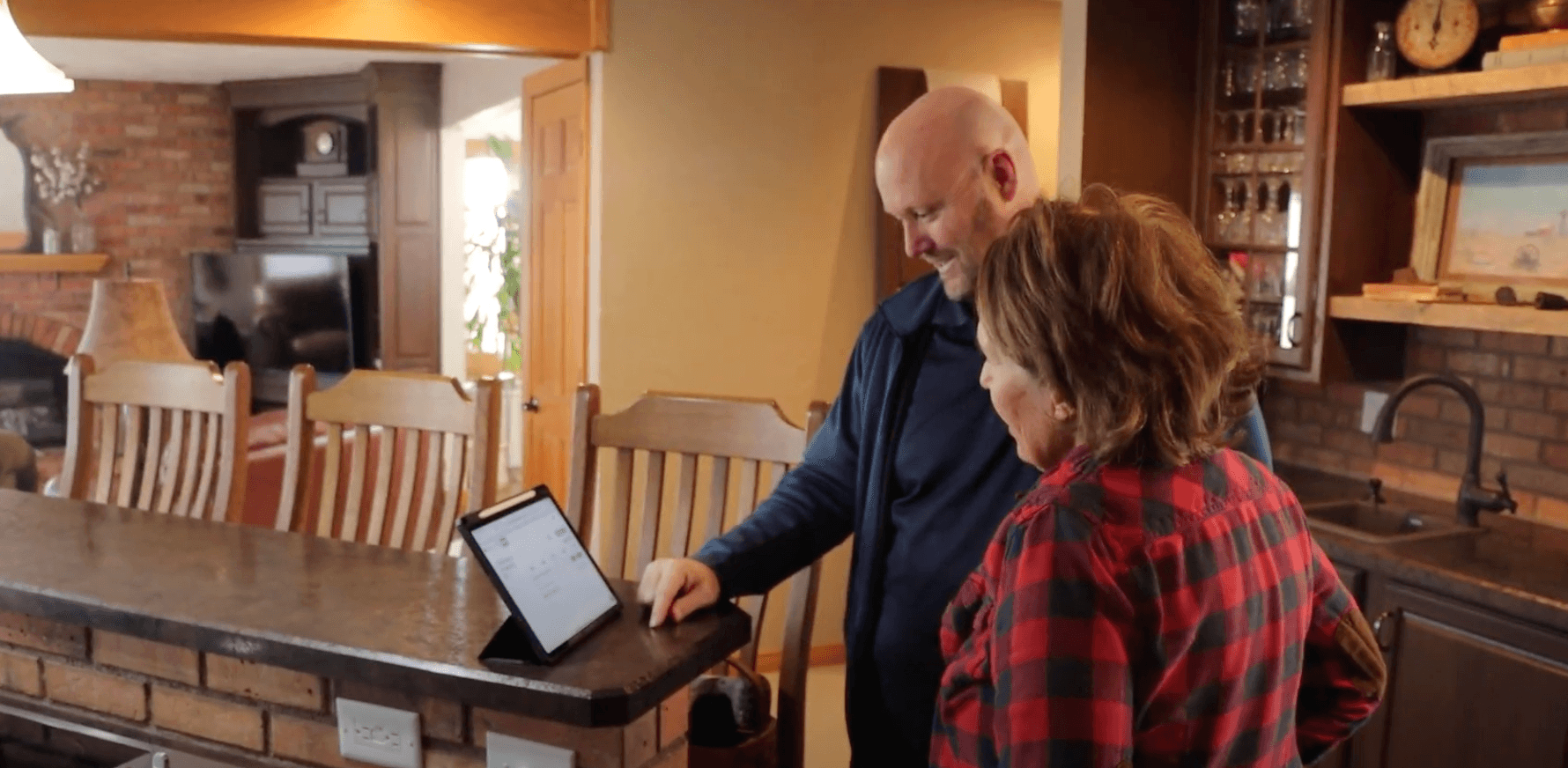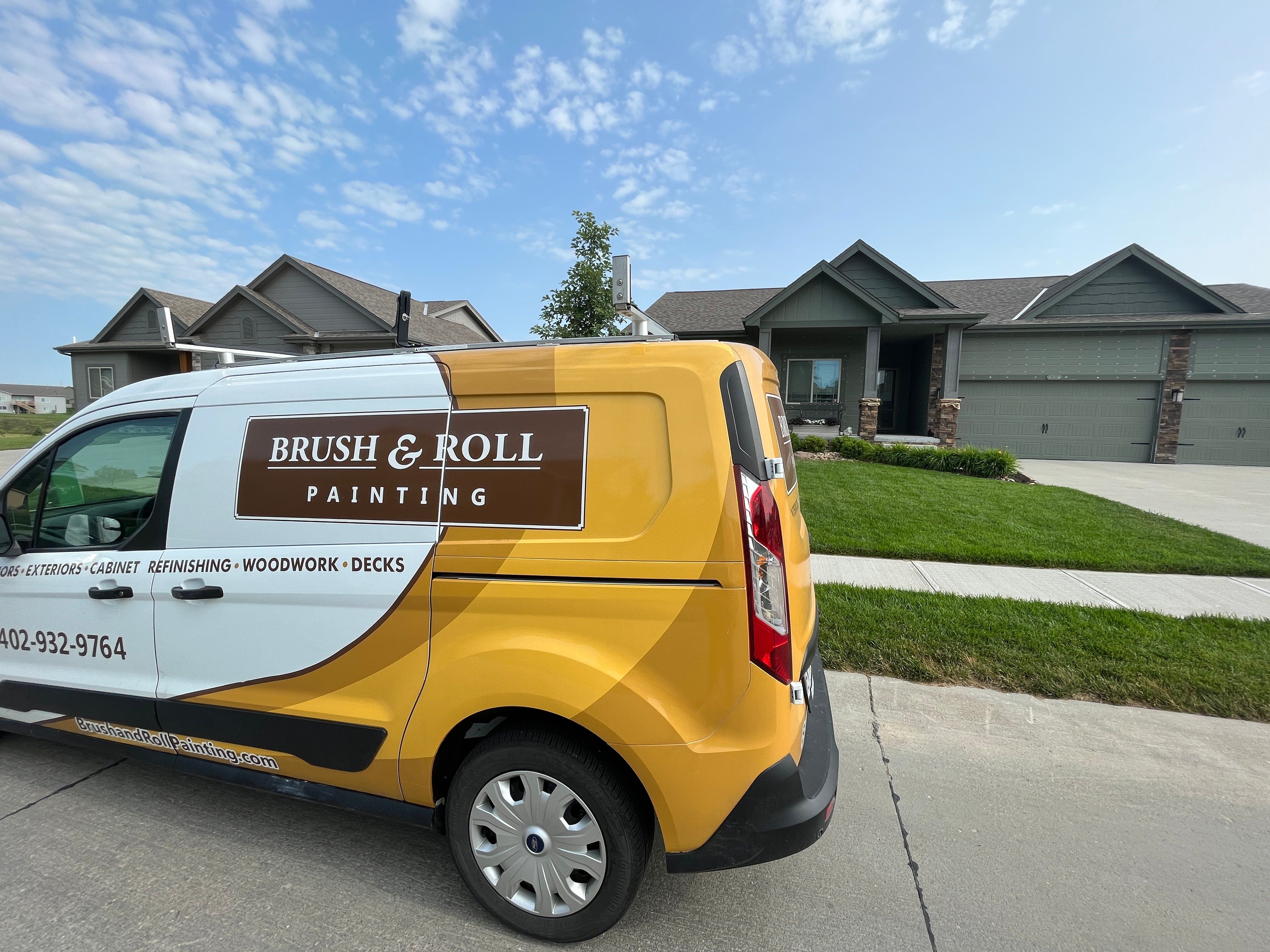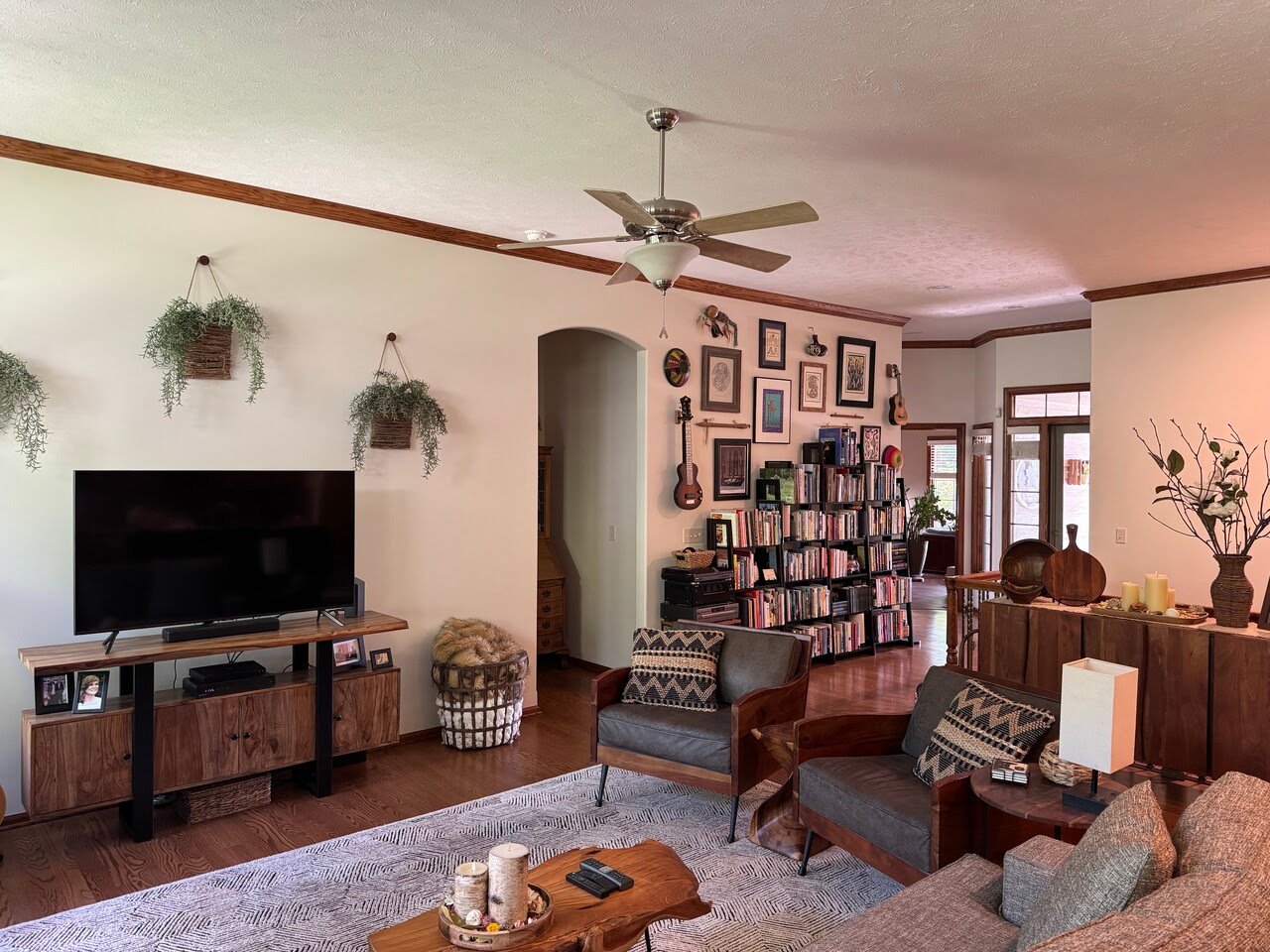How to Stop Paint on Cabinet Handles & Knobs from Peeling
July 19th, 2023
4 min read
.png?width=800&height=418&name=Untitled%20design%20(8).png)
Is the area around your cabinet knobs and handles not looking too great? Does it feel soft? Is it peeling or chipping? Can you see the old finish peeking out from under the paint?
This is a common problem many homeowners face. Rest assured, it can be fixed!
In this article, you will learn why your cabinet paint is getting soft around the handles and knobs and how to prevent it. By reading this, you can save your kitchen or bathroom cabinets from further damage.
Brush & Roll Painting is a cabinet refinishing company serving the Omaha area. We have been helping homeowners solve unappealing problems on their cabinet doors for over 25 years.
Why Cabinet Paint is Peeling Around Handles & Knobs
The main reason why you are experiencing soft paint around your cabinet handles and knobs is that there was cabinet, woodwork, latex, or acrylic paint used to coat your cabinets or cheap nitrocellulose clear lacquer finishes for stained cabinets.
Cabinet or woodwork paint or lacquers from the local paint store may sound like the perfect product to use to paint or finish your cabinets. However, these products do not keep up with the natural wear and tear that comes with cabinets.
Assuming your cabinets in kitchens and bathrooms get used on a daily basis, the paint or finish is frequently getting touched by your hands. Our hands have natural oils on them that cause cabinet clear finishes or woodwork paint to break down and become soft.
Never mind the occasional splatters and stains you can find in a kitchen, over time, the oils on your hands alone are a major cause for cabinet paint to break down.
Depending on your cabinets, when you open a cabinet door or drawer you are mostly touching the handle or knob, but you are still likely touching the cabinet door. Often, people use the knobs or pull handles to open the doors or drawers, but typically grab the top or bottoms to close.
When cabinet paint begins to start peeling and chipping, it is only a matter of time before it has spread across the entire cabinet door.
So what can cabinet or woodwork paint be used for? It can better be used on woodwork like baseboards, door frames, and doors. These areas are not as frequently touched or used as the main feature of your kitchen.
How to Stop Paint on Cabinet Handles & Knobs from Peeling
The best way to stop and repair paint or stain from peeling on cabinet handles and knobs is to have the cabinets refinished with high-quality products and detailed prep work.
Having your cabinets refinished correctly is an investment, but also much more affordable in comparison to getting all-new cabinetry.
Prep work to repair peeling paint on cabinets
1. Clean Cabinets
Thoroughly cleaning cabinets is the first step to lasting and durable results. Clean cabinets will be easy to apply products on top of.
If there is dirt or any kind of residue living on the wood or old paint, it will show through the layers of the products. The final finish will not be smooth and flawless.
During this step, cabinet finishers take a denatured alcohol and water mixture along with a buffer and a sander to focus on tough spots. They also have a cloth and a scraper on hand for those extra stubborn areas..
2. Smooth Sand
The next step toward durable cabinets is smooth sanding. This will fix uneven surfaces from the peeling paint. It doesn’t need to fully remove the old paint or stain, but thorough sanding provides a smooth and sleek touch.
Another benefit of sanding is that the first layer of primer will have a surface to adhere to.
3. High-Quality Primer
It is likely that there wasn’t a primer applied at all underneath the cabinet paint. This further explains why the paint is chipping. The paint did not have anything to adhere to, so it lifted itself from the surface.
A high-quality primer is a crucial component and acts as a durable layer between the product and the wood.
At Brush & Roll Painting we apply 2-3 coats of isolante primer while sanding in between each layer. Sanding during this process allows for premium smoothness and adhesion.
4. High-quality products = durable layers
Investing in high-quality products is going to pay off in the long run. Rather than having chipping cabinets and peeling paint every few years, you will have a product that still looks as good as new.
One kind of high-quality product for cabinet refinishing is 2K polyurethanes. 2K polyurethanes (2K polys) have been groundbreaking for the wood coatings industry. 2K polys can create a clear or pigmented mixture that can be applied on wood surfaces.
To achieve a cabinet-painted look, pigment is mixed into the 2K poly, allowing each layer to be durable, rather than just a protective sealer on top of the paint.
2K polys are a professional grade product and require mixing a hardener, or catalyst, with them. When this happens, the chemicals are bonded together, forming a durable thickness on any surface.
At Brush & Roll Painting, we use a 2K Poly called Milesi which is moisture, abrasion, and chemical resistant.
5. Maintenance
Consistently cleaning your cabinets will help them from peeling as well. With products like Milesi, the only ingredients you need for cleaned cabinets are soap and water.
Stains should be easier for you to clean once your cabinets are refinished. They should wipe off seamlessly with little to no effort.
6. Take advantage of your warranty
Most companies will offer a warranty with cabinet refinishing.
At Brush & Roll Painting, we offer a 9-year warranty that covers 1 hour of work yearly. We encourage homeowners to take advantage of this offer to help repair any areas that received accidental damage.
Conclusion
In summary, cabinet paint is likely peeling around handles and knobs because an inferior product was used. To stop cabinet paint from peeling or chipping, you will need to have your cabinets refinished.
Brush & Roll Painting offers durable and lasting cabinet refinishing. We have transformed thousands of homes across the Omaha area and strive to provide an excellent experience for each one.
Next, dive deeper into why cabinet paint might not be the best choice for cabinet refinishing. These products are used by many but have been consistently proven to cause peeling or chipping cabinets.
Kaylea is the Brush & Roll Painting Content Manager. Kaylea is a Journalism and Media Communications summa cum laude graduate with a minor in Marketing from the University of Nebraska at Omaha. Kaylea manages the marketing for Brush & Roll Painting.













-Jul-23-2025-02-21-33-5468-PM.png?width=800&height=418&name=Blog%20Post%20Image%20Size%20(2)-Jul-23-2025-02-21-33-5468-PM.png)




-Oct-22-2025-01-39-19-5208-PM.png?width=800&height=418&name=Blog%20Post%20Image%20Size%20(1)-Oct-22-2025-01-39-19-5208-PM.png)





